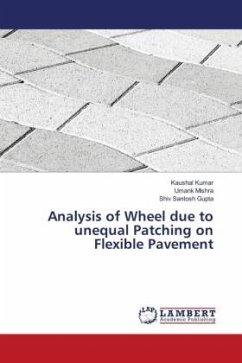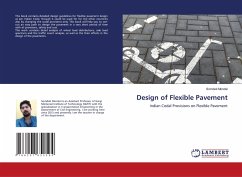
PERFORMANCE EVALUATION OF PAVEMENT MARKINGS
ON PORTLAND CEMENT CONCRETE BRIDGE DECKS
Versandkostenfrei!
Versandfertig in 6-10 Tagen
45,99 €
inkl. MwSt.

PAYBACK Punkte
23 °P sammeln!
For slightly over than two years, a research was done to study sixteen different pavement marking materials on Portland cement concrete bridge decks connected to mainline asphalt pavement in Ashland and Richland counties Ohio along the three lanes of the interstate I-71 with 42,000 average daily traffic each direction. To ensure that all traces of the old thermoplastic have been removed, each material was installed in 150-mil grooves as Yellow on the left edge line and white on the two lane lines and the right edge line. The groove depth selected was the same as the transverse tines depth on t...
For slightly over than two years, a research was done to study sixteen different pavement marking materials on Portland cement concrete bridge decks connected to mainline asphalt pavement in Ashland and Richland counties Ohio along the three lanes of the interstate I-71 with 42,000 average daily traffic each direction. To ensure that all traces of the old thermoplastic have been removed, each material was installed in 150-mil grooves as Yellow on the left edge line and white on the two lane lines and the right edge line. The groove depth selected was the same as the transverse tines depth on the bridge decks. Readings were taken using two handheld LTL-X for retroreflectivity and one MiniScan XE Plus for color measurements in addition to subjectively rating daytime color, nighttime visibility, and durability. The results then were used to predict the service life of each material using different mathematical models that estimated the time required for retroreflectivity to drop to a certain threshold value for white and for yellow markings. The service life predictions were used to calculate the life cycle costs of the marking materials in order to determine their cost effectiveness.












